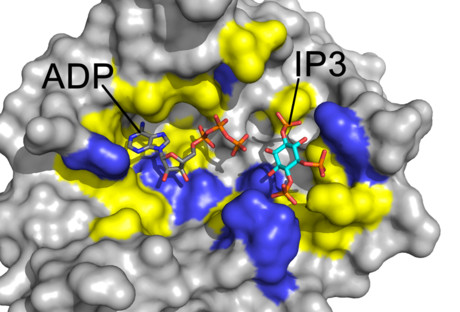One step closer to a new antifungal drug

Australian researchers are now one step closer to developing a drug to treat life-threatening fungal infections, which cause more than 1.6 million deaths annually — on par with the number of deaths caused by tuberculosis and greater than those due to malaria.
Cryptococcus neoformans is the world’s most common cause of fungal meningitis, for which the primary site of infection is the lung. After inhalation from the environment, the infection spreads from the lung to the brain via the bloodstream. Immunosuppressed patients typically present with meningitis, which is fatal without treatment.
“Finding new treatments to kill fungi is a major health priority,” said Associate Professor Julianne Djordjevic, lead researcher on the project. “Novel antifungal drugs are desperately needed to reduce the high global morbidity, mortality and cost associated with treating invasive fungal infections.
“Because fungi are so similar to human cells, developing new drugs that kill fungi — but are non-toxic to humans — is a challenge. Furthermore, not all antifungal drugs kill all types of fungi and drug resistance is an emerging problem.”
Along with her team from the Westmead Institute for Medical Research, Associate Professor Djordjevic recently found that Arg1, a protein produced by all fungi, enables the Cryptococcus neoformans fungus to establish potentially lethal infections in patients with weakened immune systems, such as those with HIV/AIDS or leukaemia. Their research has been published in the journal Virulence.
“Using gene deletion analysis and animal infection models, we identified that the Arg1 metabolic pathway allows Cryptococcus to establish a lung infection and to spread to brain, resulting in meningitis,” Associate Professor Djordjevic said.
The team’s discovery could very well provide a new avenue for the development of safer antifungal drugs, with Associate Professor Djordjevic saying they are now looking at Arg1 as a selective target for antifungal drug development.
“By targeting Arg1, we hope to block the Arg1 metabolic pathway and thereby prevent Cryptococcus from establishing a lung infection and spreading to the brain,” she said.
“Treatments with fewer side effects will significantly increase the chances of recovery for a patient, potentially saving thousands of lives every year.”
Parkinson's alters emotion-related bodily sensations
People with Parkinson's disease were found to have significant differences in all bodily...
Softer tumours fuel spread of triple-negative breast cancer
A metabolic 'survival switch' controlled by the stiffness of triple-negative breast...
Maternal protein intake affects offspring's facial features
New study findings emphasise the importance of maintaining a well-balanced diet during pregnancy,...







